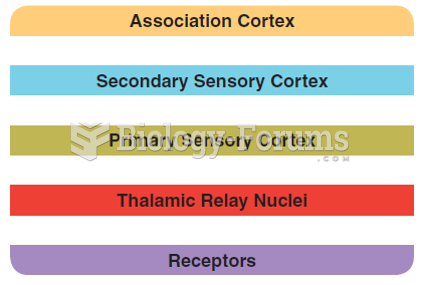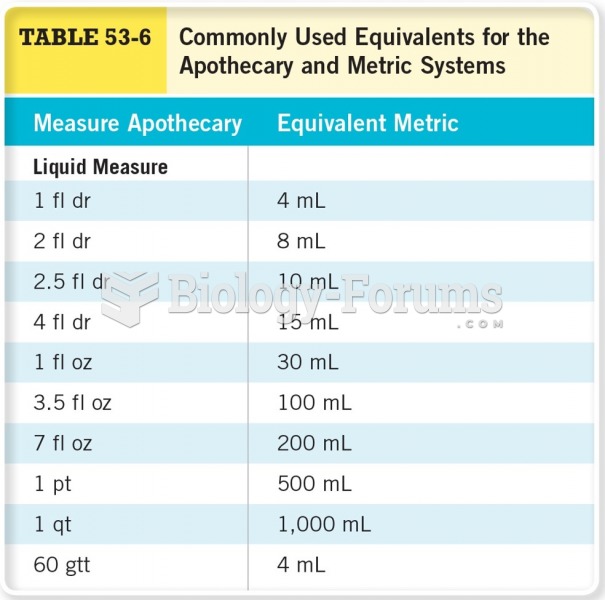|
|
|
The first war in which wide-scale use of anesthetics occurred was the Civil War, and 80% of all wounds were in the extremities.
By definition, when a medication is administered intravenously, its bioavailability is 100%.
Sildenafil (Viagra®) has two actions that may be of consequence in patients with heart disease. It can lower the blood pressure, and it can interact with nitrates. It should never be used in patients who are taking nitrates.
Although puberty usually occurs in the early teenage years, the world's youngest parents were two Chinese children who had their first baby when they were 8 and 9 years of age.
IgA antibodies protect body surfaces exposed to outside foreign substances. IgG antibodies are found in all body fluids. IgM antibodies are the first type of antibody made in response to an infection. IgE antibody levels are often high in people with allergies. IgD antibodies are found in tissues lining the abdomen and chest.
 Young adulthood brings the greatest number of role transitions and highest levels of demands than ...
Young adulthood brings the greatest number of role transitions and highest levels of demands than ...
 The hierarchical organization of the sensory systems. The receptors perform the simplest and most ...
The hierarchical organization of the sensory systems. The receptors perform the simplest and most ...





